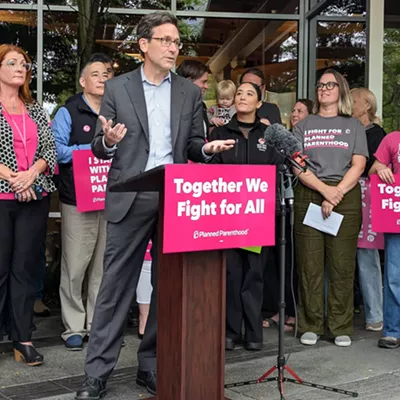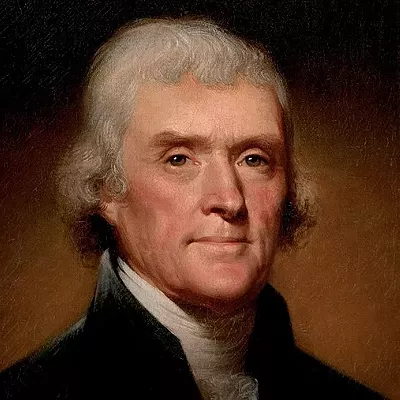In Idaho, the Idaho Army National Guard's 116th Brigade Combat Team -- the National Guard's only armored cavalry brigade -- was in even more dire straits with most of its tanks, trucks, communications systems and Humvees left behind in Iraq.
The Washington Army National Guard was already short on equipment before the 81st Brigade deployed to Iraq in 2004, public affairs officer Lt. Keith Kosik says, citing two main factors.
"Historically, Army Guard units haven't always received everything we're supposed to receive. We have also had to leave a lot of equipment in-theater. We left $35 million [of gear] behind in Iraq and Afghanistan," Kosik says.
Brig. Gen. Gordon Toney, commanding general of Washington's Army National Guard, says the Guard has 55 percent of its allotted gear -- but that figure includes everything from tanks to paper clips in what are called "lines of equipment." The critical equipment lines, "What we call our prime movers," Toney says, are in slightly better shape. "With Humvees, we have 61 percent of our requirement. That's 529 Humvees on hand in the state, which is still a significant amount."
His counterpart, Brig. Gen. Alan Gayhart, Deputy Commanding General of the Idaho Army National Guard, says that only now, two years after the brigade returned from its tour in Iraq, is major equipment beginning to return to the Idaho inventory.
"We left behind a company of [M1A1 Abrams] tanks, a battalion of Bradleys and most of our rolling stock -- trucks and Humvees," Gayhart says. "We are starting to get a good fill of 2.5- ton and 5-ton trucks. Our tanks are probably being off-loaded as we speak." But, he adds, the state's small contingent of Blackhawk helicopters is on its way overseas in a bad year for wildfires. A national equipment pool has lent Idaho two Blackhawks, and "we've been using the dickens out of those."
Washington's Blackhawk helicopters and twin-rotor Chinooks were also snapped up for service in Iraq and Afghanistan, just as they have been in Montana and Idaho, Toney says.
"Five of our CH-47s have come back from Afghanistan and have been through refurbishment and are back on our ramp," Toney says. "The Blackhawk is a good platform for firefighting, but the CH-47 is a good water-bucket platform, too." The Blackhawks are faster and more nimble in rugged terrain, but the Chinooks can dump nearly twice the water, he says.
& lt;span class= & quot;dropcap & quot; & B & lt;/span & oth states say their units can respond to typical crises and disasters. But, "If we had a natural disaster in the scope of Hurricane Katrina or a huge earthquake, then we'd have to rely on what we call EMACs -- emergency management assistance compacts," says Washington Guard public affairs officer Kosik. These are essentially mutual-aid agreements with nearby states.
Like Guard units in other states, Idaho and Washington have seen high demand for Humvees, trucks, night-vision goggles and digital communication. Communication is a critical area; most Guard units are short of the digital gear that is in high-demand in Iraq and Afghanistan. "Civilian radio is available to backfill," Gayhart says.
Both generals say they have had to move equipment around so that units closest to deployment are able to train with the gear they will be using overseas.
"In Washington, we are in pretty good shape," Toney says. Even some of the Vietnam era gear -- M113 tracked armored personnel carriers, for instance, have been completely refurbished to what Toney calls "zero hours/zero miles" status. The state is also getting restored tanks and Bradley Fighting Vehicles, he says.
Despite the logistical gymnastics of shepherding its gear to units that need it most, "We have met all our training goals," Gayhart says.
Toney says, "Nationally, the National Guard equipment shortage is an issue that needs to be addressed. I do feel comfortable our units are going overseas well-trained and well-equipped.














